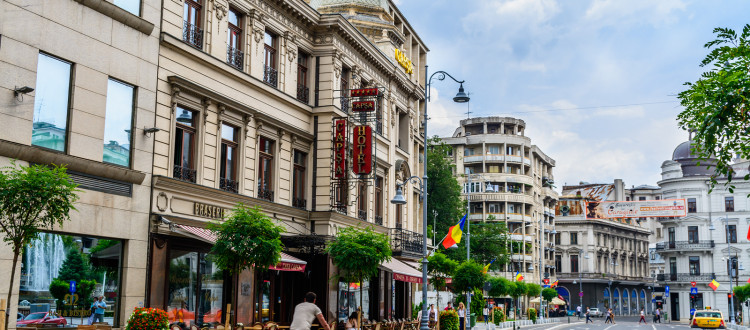Interesting things about Bucharest and Romania
Situated in the part of the world which will perhaps always be known as Eastern Europe, it would be more accurate to describe Bucharest’s geographical location as south-eastern Europe. Bucharest was founded in the 14th century and it is located in the part of Romania known as Wallachia, one of the three historic principalities (next to Moldavia and Transylvania) which are now the modern country. The official population of Bucharest is just under 2 million, but as many migrants from the rest of the country do not register as citizens of the capital, the true number is probably closer to 3 million.
Bucharest is close to the Danube, 69 kilometers away, which forms the border between Romania and Bulgaria. The main crossing point is Giurgiu, linked by a bridge with Ruse, the Bulgarian town on the other side of the river. Bucharest is aroud 240 km away from Constanta and the Black Sea coast – the journey can be done in just over two hours. To the north of Bucharest is Ploiesti, and beyond that the Carpathian Mountains, a two hour drive away from the capital.
- Bucharest was first mentioned in documents in 1459, as the residence of Vlad III the Impaler (Vlad Țepeș).
- In 1569, Prince Gheorghe Ghica designates Bucharest to be capital city of Wallachia.
- The first road in Bucharest was Drumul de Lemn (The Wooden Road), today Calea Victoriei (Victory Avenue).
- The first horse driven omnibuses were inaugurated in Bucharest in 1840, being among the first European cities to have such means of transport.
- Bucharest was the first city in the world lighted up with lamp oil (1858).
- Filaret is the oldest station in Bucharest (inaugurated in 1869).
- The first cinematographic projection in Romania took place in Bucharest, on the 27th of May 1896 (less than five months after the first film exhibition by the Lumière brothers).
- In 1952, the National Institute of Gerontology ‘Ana Aslan’ is founded; the first institude of geriatrics in the world.
- The modern Romania was born when the principalities of Moldavia and Wallachia merged in 1859, and became independent in 1877.
- Most Romanians are members of the Romanian Orthodox Church, which is one of the churches of Eastern Orthodox Christianity.
- The most widespread form of Romanian folk music is the doina
(a Romanian musical tune style, with Middle Eastern roots, that can be found in Romanian peasant music, as well as in Lăutărească and Klezmer music. Similar tunes are found throughout Eastern Europe and the Balkans. In some parts of the Balkans the doina is referred to as scaros/scaru). - That the words “dor” (to miss someone) and “doina” have no synonyms in any other language.
- The highest mountains are the Carpathians, describing an arch on the Romanian therritory. The highest peak is Moldoveanu, from the Meridional Carpathinas, reaching 2,444 metres.
- Romanians celebrate Marțisorul, a traditional holiday announcing the beginning of spring (1st of March).
- Constanța is the largest port of the Black Sea.
- The name Transylvania comes from Latin, and its meaning is ‘beyond the forest’ [“trans”=beyond and “silva”=forest].
- Romanian is one of the five languages in which religious services are performed in the autonomous monastic state of Mount Athos.
- The currency is leu (RON).
- The name Romania comes from Rome or the (Eastern) Roman Empire and asserts the country’s origins as a Roman colony. (In Late Antiquity the Roman Empire was often called simply Romania in Latin).
- In the Middle Ages Romanians lived in three distinct principalities: Wallachia, Moldavia and Transylvania.
- Romania features some of the most beautiful monasteries worldwide, especially the Moldavian ones, which are hand-painted.
